Weekly recap
US stock markets continued to grind higher last week with the S&P 500 and the Nasdaq 100 hitting record highs on Thursday before easing back at the end of the week. The USD rose 0.6% across the week, its second straight weekly rise.
Positive economic data and solid corporate earnings have buoyed markets. US inflation rose to 2.7% year on year, up from 2.4% but in line with expectations. Meanwhile, retail sales showed that US consumers were still spending, and jobless claims unexpectedly fell, highlighting the ongoing resilience in the US labor market.
Markets are also underpinned by solid corporate earnings from U.S. banks as well as TSMC, the world’s largest contract chipmaker, highlighting ongoing demand for AI. The Nasdaq outperformed its peers, rising 1.5% last week and surpassing 23,000.
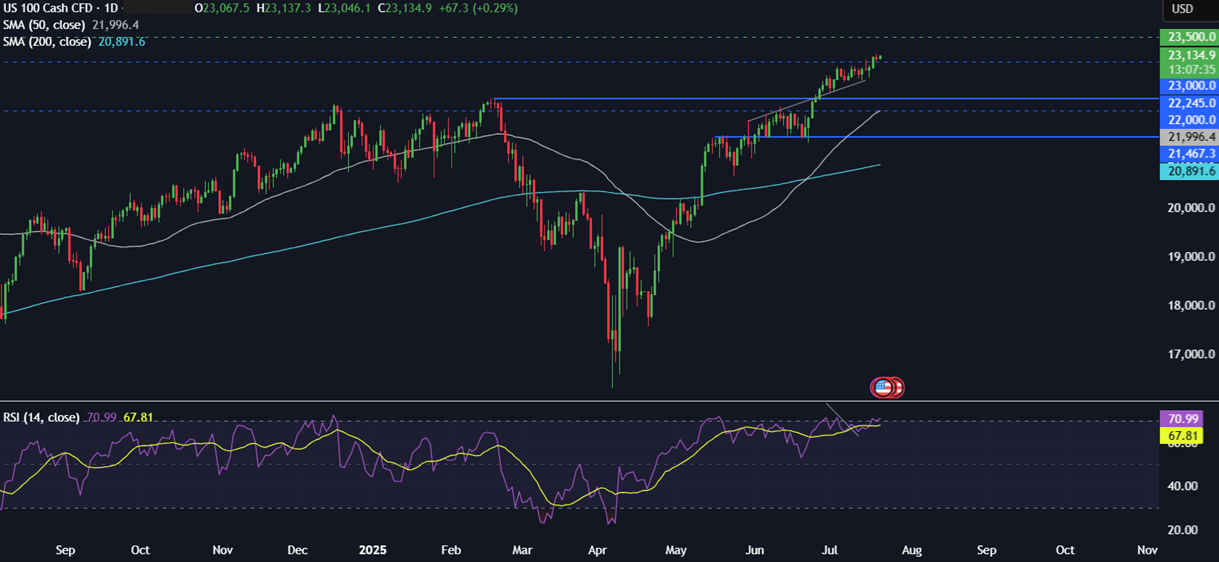
President Trump quickly denied rumors that he may fire Federal Reserve Chair Jerome Powell. Trade and tariffs continue to cast a cloud over investors and the market. The US administration has pushed back its deadline to August 1st, but for most global trading partners, uncertainty remains. Trump said he is considering a universal tariff of 15 or 20%, up from the current 10% level.
Tariff developments will remain in focus ahead of the August 1st deadline and could influence market sentiment. However, investors have become somewhat numb to the constant stream of trade headlines—gold trades in a holding pattern, awaiting the next catalyst.
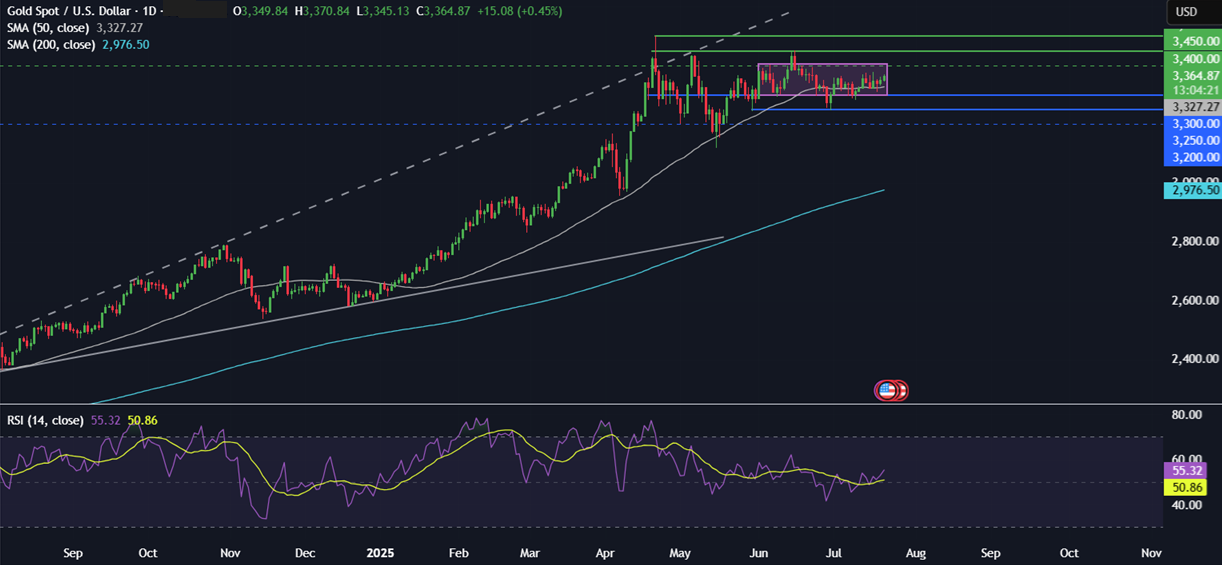
Tech earnings (Wednesday)
This week, the US earnings season ramps up with the first of the “Magnificent 7” stocks updating the market. On Wednesday, after the close, both Tesla and Alphabet are expected to release their results. Earnings will be under the spotlight as Tesla shares have come under pressure due to falling sales amid a brand backlash against CEO Elon Musk’s foray into politics, as well as increasing competition. Meanwhile, Google’s parent company, Alphabet, is also due to report, with competition and growth in its cloud business expected to be in focus, as well as its AI spending. Disappointing numbers from either stock could broadly impact sentiment and pull the S&P lower. On aggregate, the S&P 500 is now pacing to post earnings growth of 5.6% compared to the same quarter a year ago, which is above the 4.8% analysts expected last week.
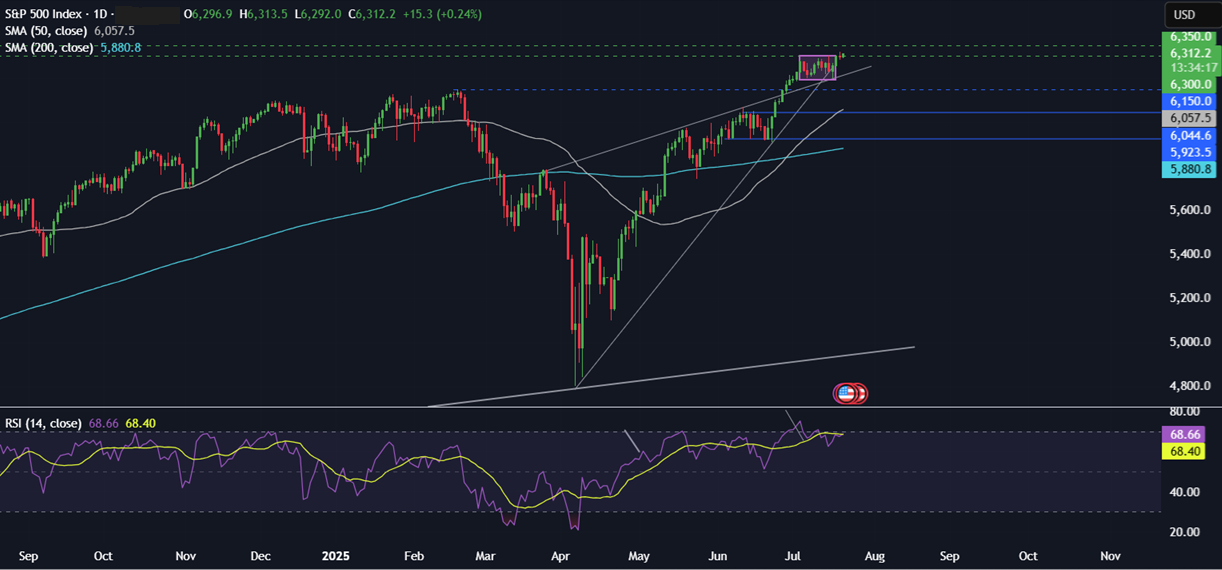
UK PMIs (Thursday)
Expectations are for July services PMI to rise to 52.9 from 52.8, manufacturing is expected to increase to 48 from 47.7, and the composite measure, which is considered a good gauge for business activity, is expected to ease to 51.8 from 52 previously. In June, business activity expanded modestly as new orders grew for the first time this year, but employers cut jobs more quickly. Investors will be looking to see whether this trend continues in July. While the signing of a US-UK trade framework deal may have alleviated some uncertainty, domestic matters are bringing more uncertainty amid growing speculation of tax rises in the upcoming autumn budget.
From a policy perspective, inflation remains sticky, unexpectedly rising to 3.6% YoY in June. However, the UK jobs market has weakened further, with unemployment unexpectedly rising to 4.7% highlighting the challenges the Bank of England faces as it looks to reduce interest rates. With this in mind, the markets will be watching the prices paid and jobs subcomponents of the PMI reports, particularly in the service sector, for clues about the inflationary outlook and the jobs market outlook. Warker-than-expected data could pull GBP/USD lower.
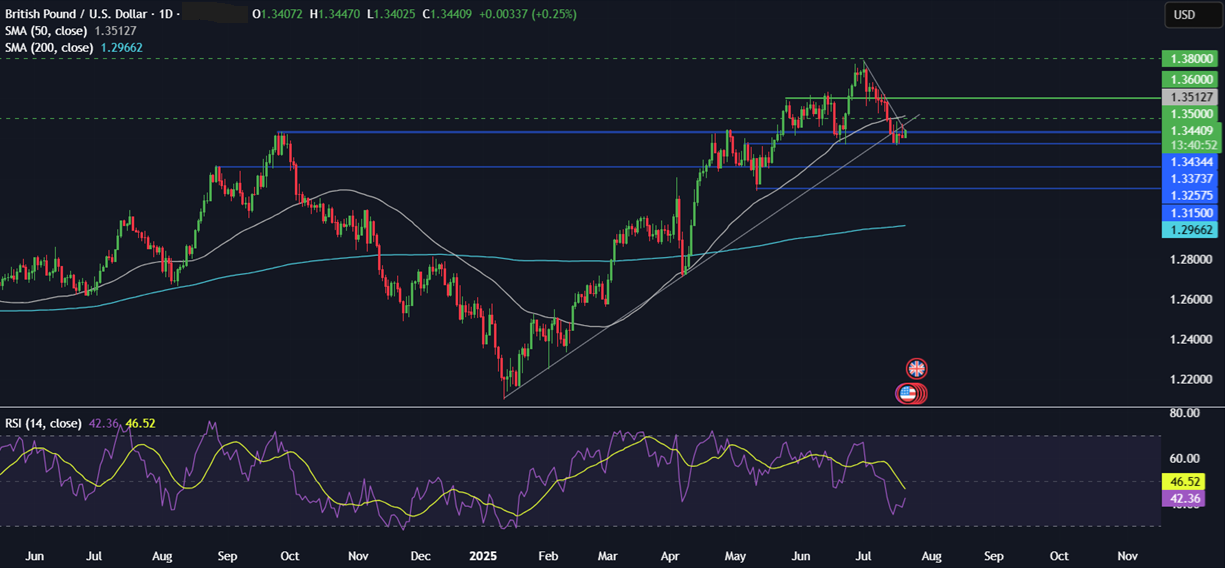
US PMIs (Thursday)
The US services PMI was slightly stronger than expected in June at 53.1, although this was down from 53.7 in May. Manufacturing remained unchanged at 52. The data also showed that price pressures rose sharply across both manufacturing and service sectors during June, while service exports suffered the largest quarterly contraction since late 2022. Overall, the data suggested that the US economy continued to grow at the end of the second quarter, and the outlook remains uncertain as inflationary pressures have risen considerably. Investors will be watching to see whether this trend persists in July, as tariff uncertainty continues for another month. The data shows that service providers are by no means immune to the tariff impact, and also reports a jump in prices often linked to tariffs on inputs such as food. Significantly weaker-than-expected data could fuel expectations for a Fed rate cut and help lift the Dow Jones closer to a record high.
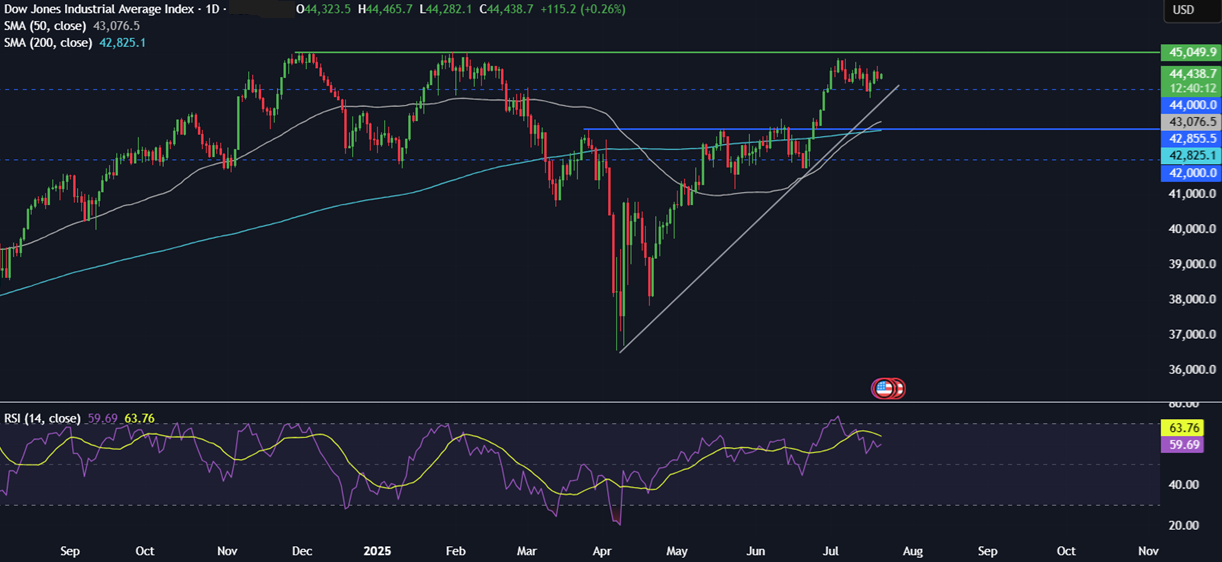
ECB rate decision (Thursday)
The ECB is due to announce its interest rate decision on Thursday, and it is widely expected to leave interest rates unchanged as it signaled in the June meeting. Meanwhile, Trump’s threat of a 30% tariff on EU imports could complicate the decision-making process. There is still time for the EU to strike a deal with the US; however, the ECB is being compelled to revise its estimates for growth and inflation. Policymakers are now contemplating a more negative outcome if the 30% tariff is applied. The ECB will be reluctant to act on what is still a threat, given the sometimes contradictory statements made by Trump. Any discussion about rate cuts will most likely be kept for the September meeting, when the ECB will have a better idea of Trump’s trade levies. Should policymakers err on the side of caution regarding the growth outlook for the region, in light of potential 30% tariffs, EUR/USD could come under pressure.
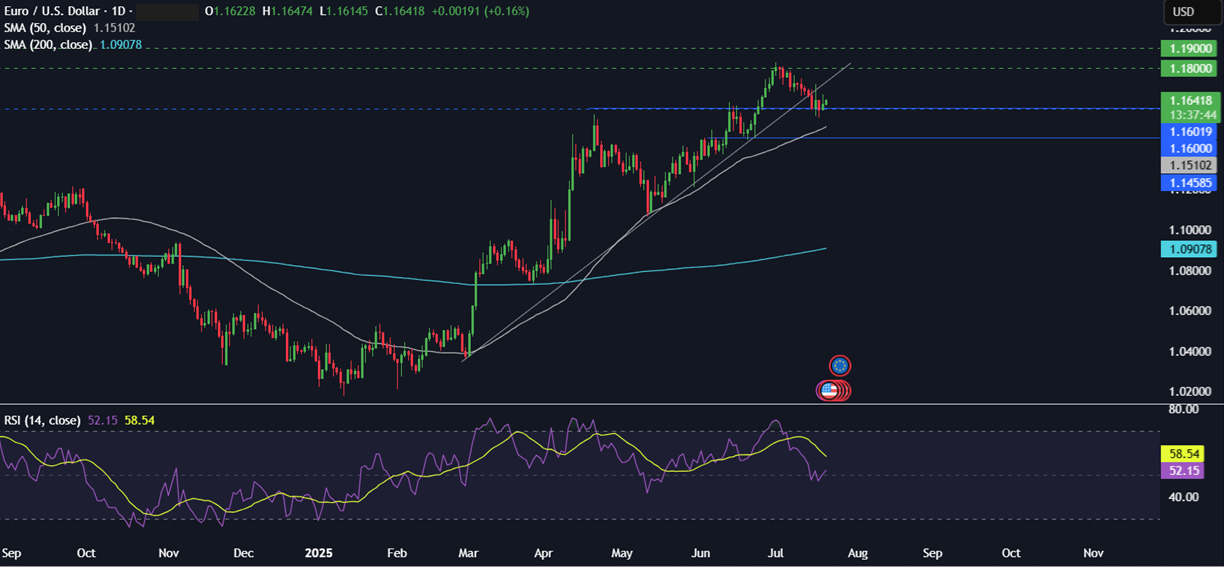
Tokyo CPI (Thursday)
The Tokyo CPI for July is scheduled to be released on Friday and is expected to edge down to 3% year-over-year, while core CPI is forecast to remain unchanged at 3.1%. While food prices are expected to have eased during the month, costs for services and manufactured food are likely to rise. The Bank of Japan will closely watch the reading as recent inflation prints have been stronger than the central bank’s expectations. The BoJ is likely to revise its inflation outlook for fiscal year 2025 upward. As a result, the Bank of Japan’s hike rate could occur sooner than previously anticipated. That said, Trump’s tariffs could still pose an obstacle, hindering growth and potentially lowering inflation.
Inflation data is expected to be released after the Japanese elections on Sunday. Despite PM Ishiba’s party losing its majority in the country’s upper house elections, Ishiba has refused to resign, helping to calm the markets and support the yen at the start of the week. In the medium term, the result remains negative for Japan; however, USD/JPY is currently posting slight losses.
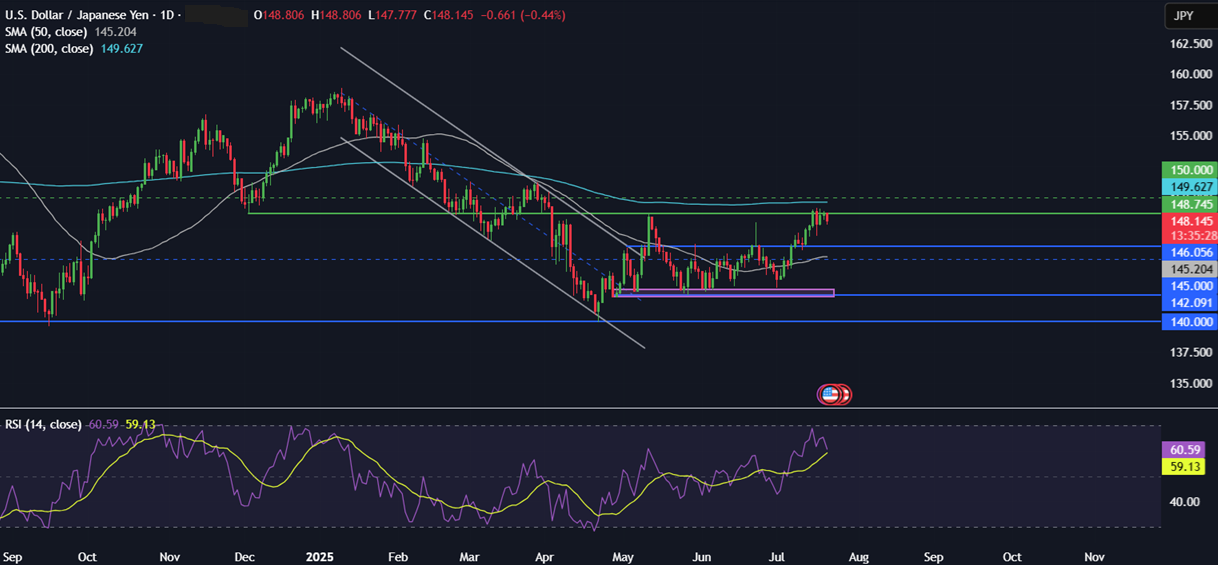
Trading involves risk.
The content provided here is for informational purposes only. It is not intended as personal investment advice and does not constitute a solicitation or invitation to engage in any financial transactions, investments, or related activities. Past performance is not a reliable indicator of future results.
The financial products offered by the Company are complex and come with a high risk of losing money rapidly due to leverage. These products may not be suitable for all investors. Before engaging, you should consider whether you understand how these leveraged products work and whether you can afford the high risk of losing your money.
The Company does not accept clients from the Restricted Jurisdictions as indicated in our website/ T&C. Some services or products may not be available in your jurisdiction.
The applicable legal entity and its respective products and services depend on the client’s country of residence and the entity with which the client has established a contractual relationship during registration.




